Celebrating the Bigcone Douglas-fir of the San Gabriel Mountains
After nearly a month of travel through one of the gems of Southern California, I’ve had enough time to reflect on all aspects of the journey–including the wonders of the wilderness and forest, as well as the state of the region. The San Gabriel Mountains remain wild, in large part, because of isolation due to slope. John Muir called them the steepest mountains he ever hiked in! It seems to me that the forests here are doing as well as they are, while our climate is rapidly changing, because of this isolation in slope. Forest pathogens travel much slower through heterogeneous landscapes with mixed stands of trees. Many of the Bigcone Douglas-fir stands we visited were in isolated on slopes of greater than 50º. Isolation sculpts the ecology of the mountain’s biota in many ways, and makes life for Pseudostuga both easier and more difficult. That balance defines the ecological amplitude of many of the species on the California Floristic Province.
I’m still working on the full report for our findings, but in general it can be said that within region 1 of the map below, Bigcone Douglas-fir are not doing well. Elsewhere, they seem to be doing fine at the moment–especially if the species has been able to avoid high intensity fires. Reproduction is occurring at variable rates but they seem to like disturbed areas, like landslides, which the San Gabriels have no problem offering.
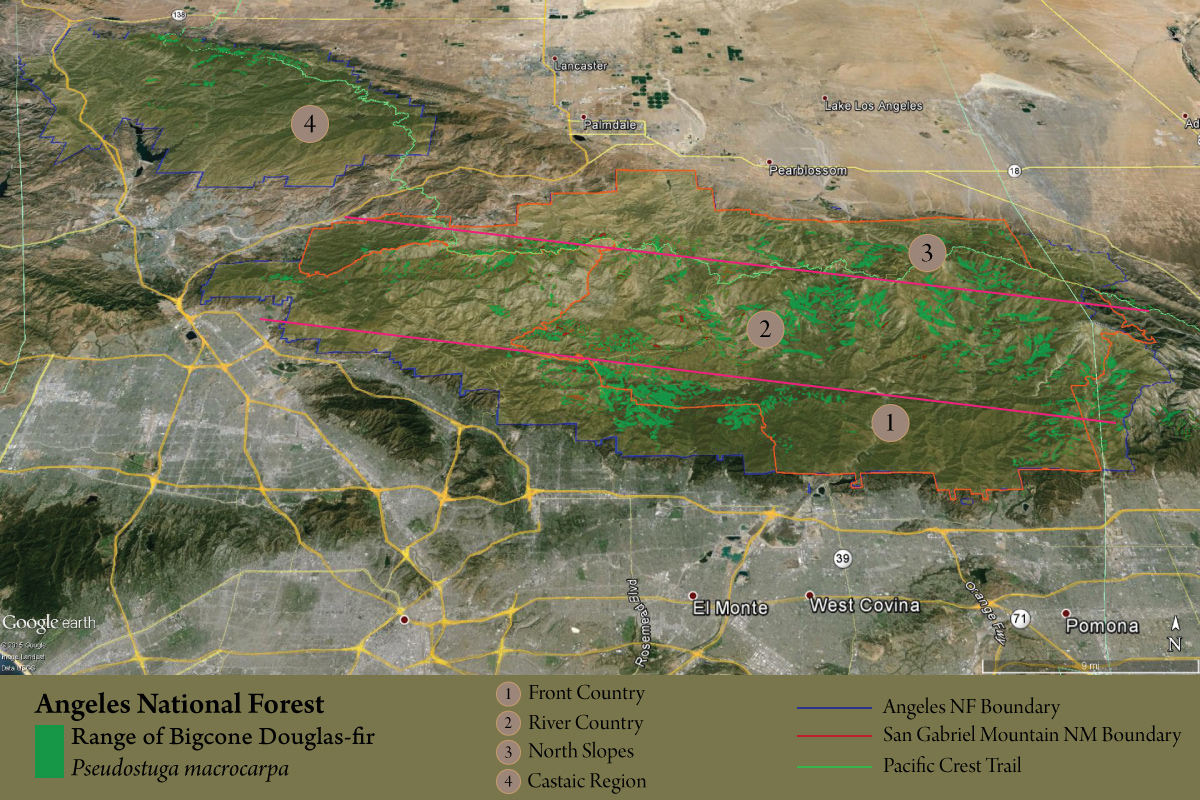
1. Front Range
Populations are often small and isolated–and while being continually exposed to increasing warmth and decreasing rain–appear to be getting smaller still. It has also been proposed that smog is playing a role in the species’ decline as well. High mortality was witnessed here–it is a tough place for many species to survive.
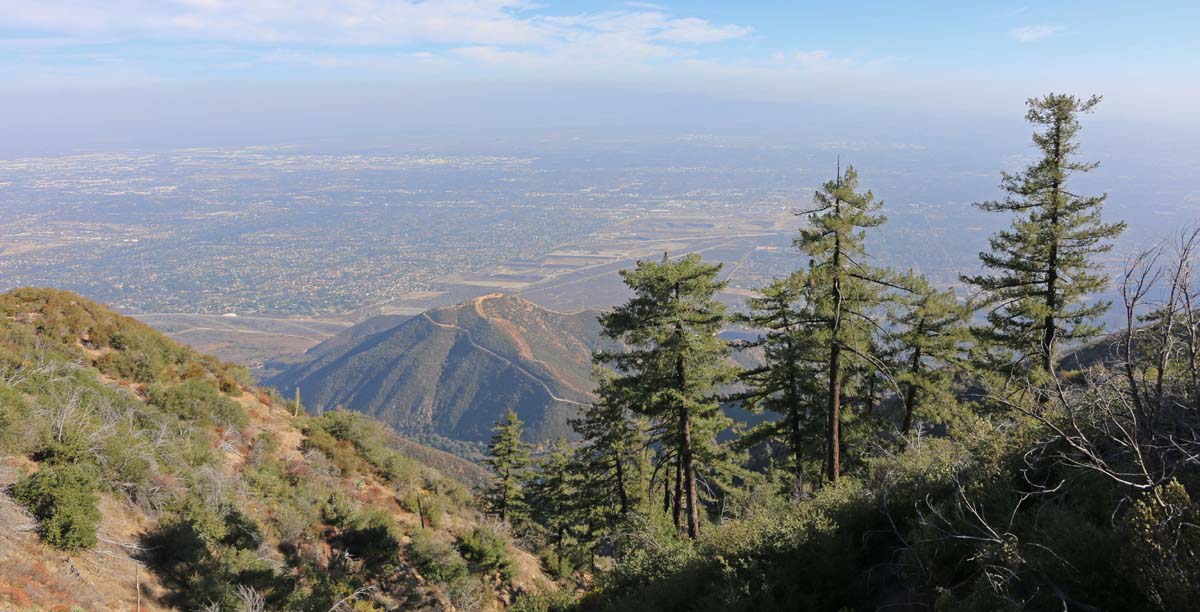
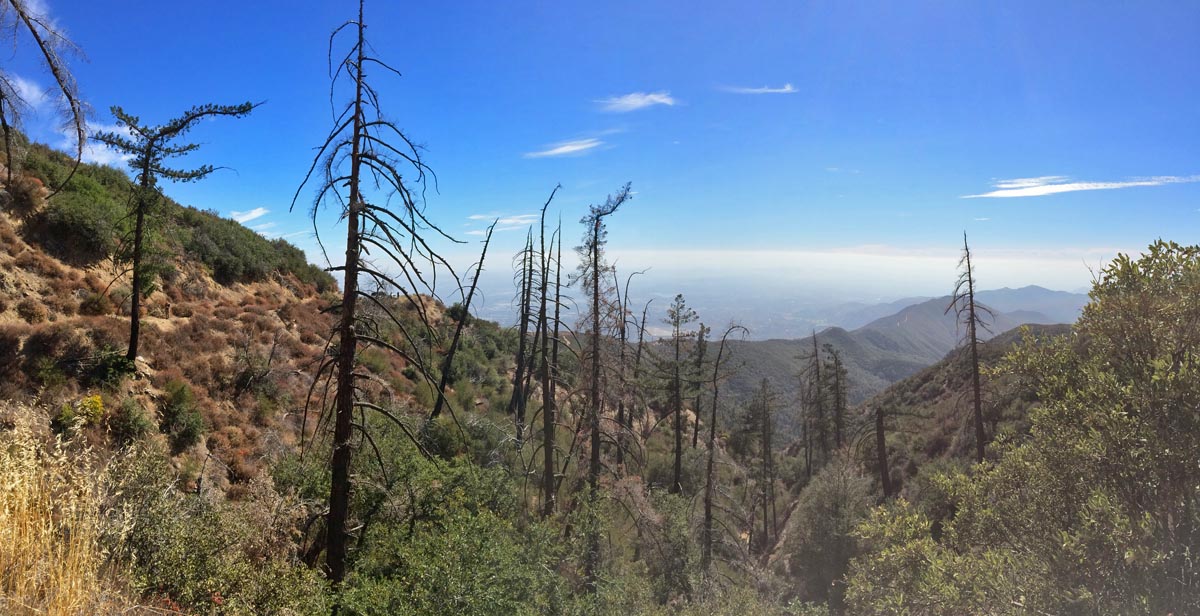
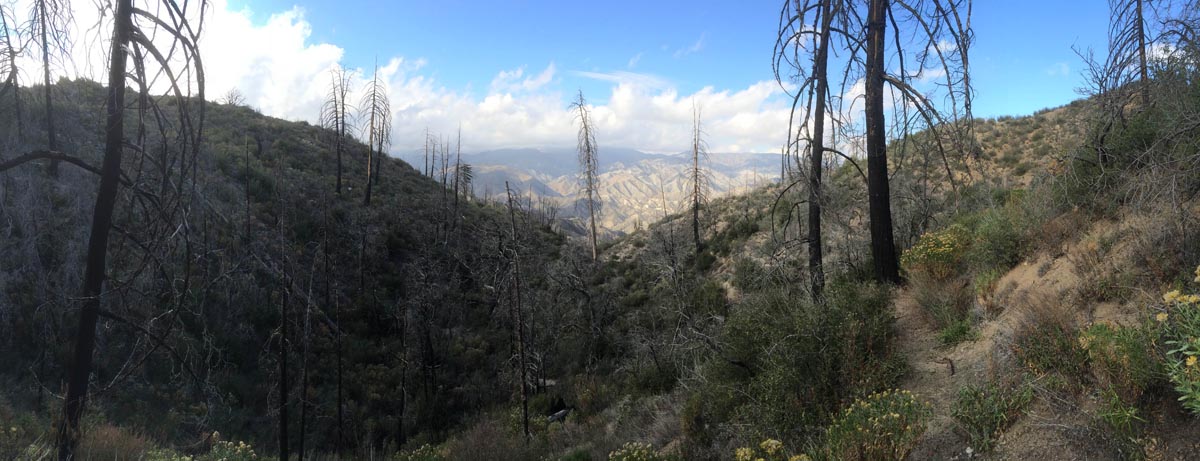
2. Interior River Country
This must be the wildest country Los Angeles County has to offer. Visitors are few and wildlife and forests seem to be thriving. Forests are healthy and PSMA reproduction is common along the washes and other areas where landslides are frequent.
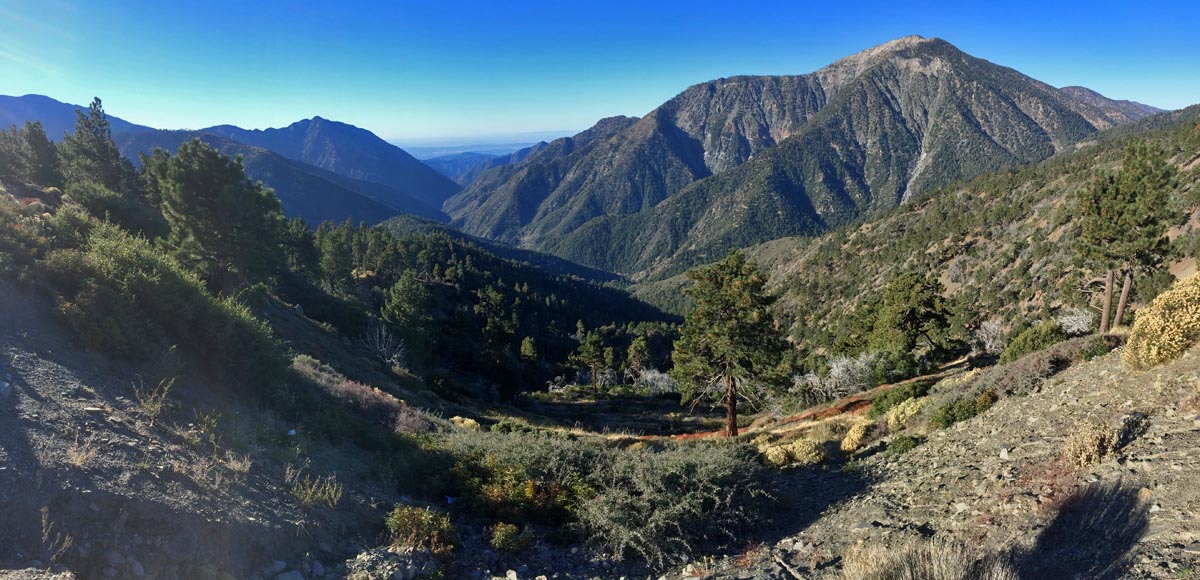
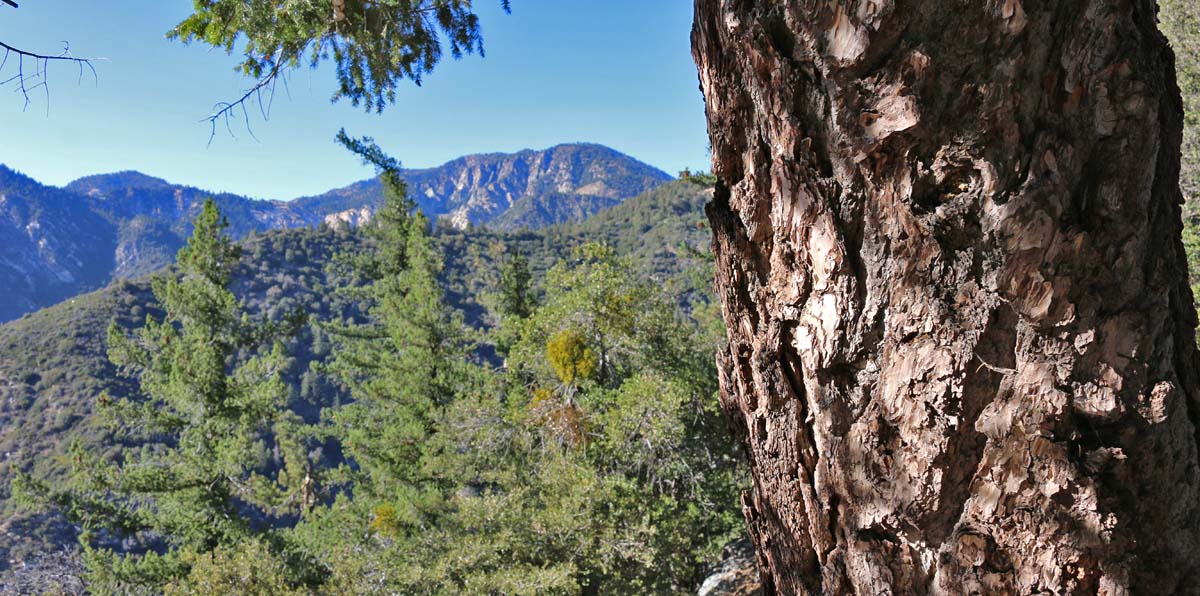
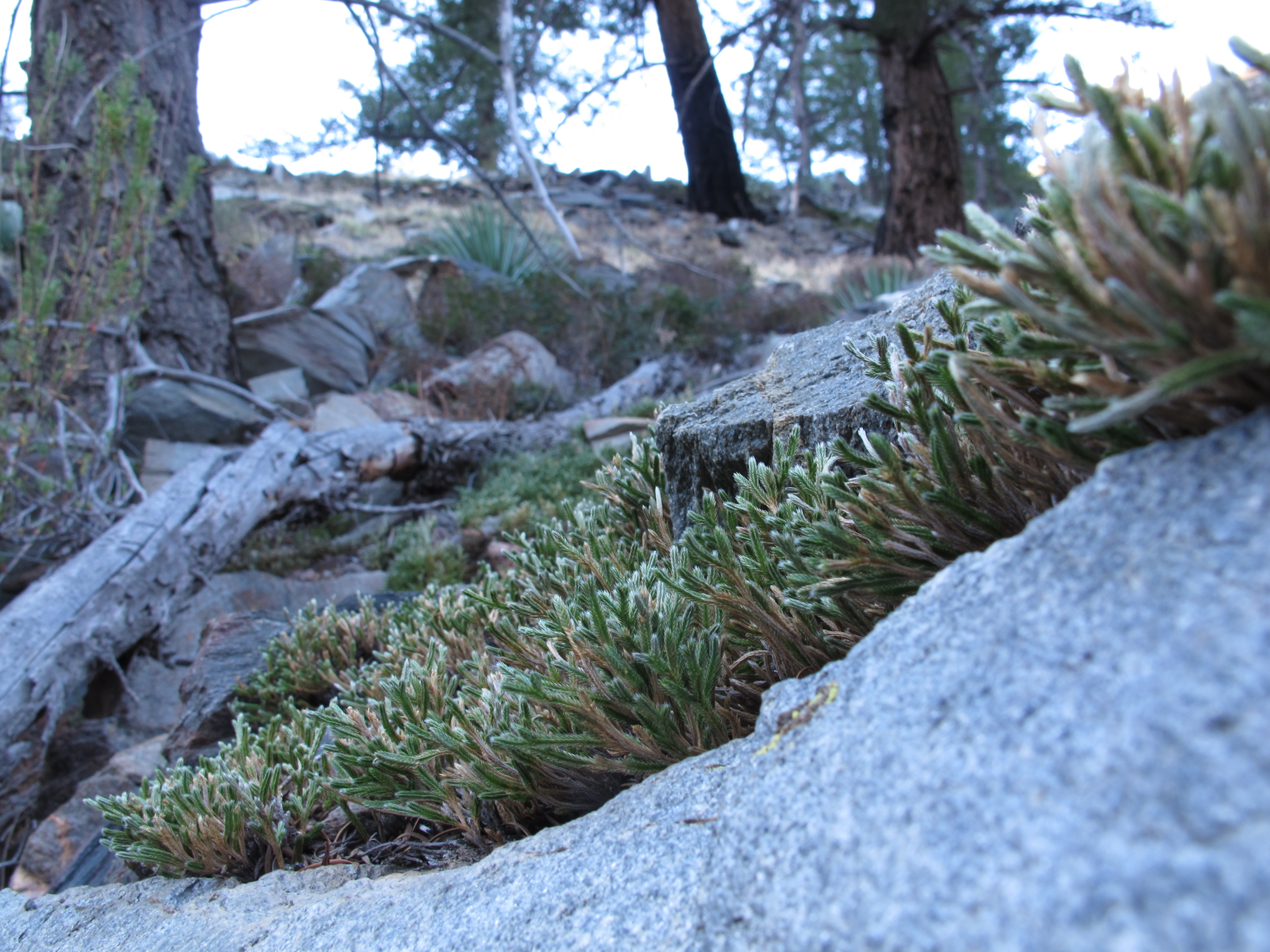
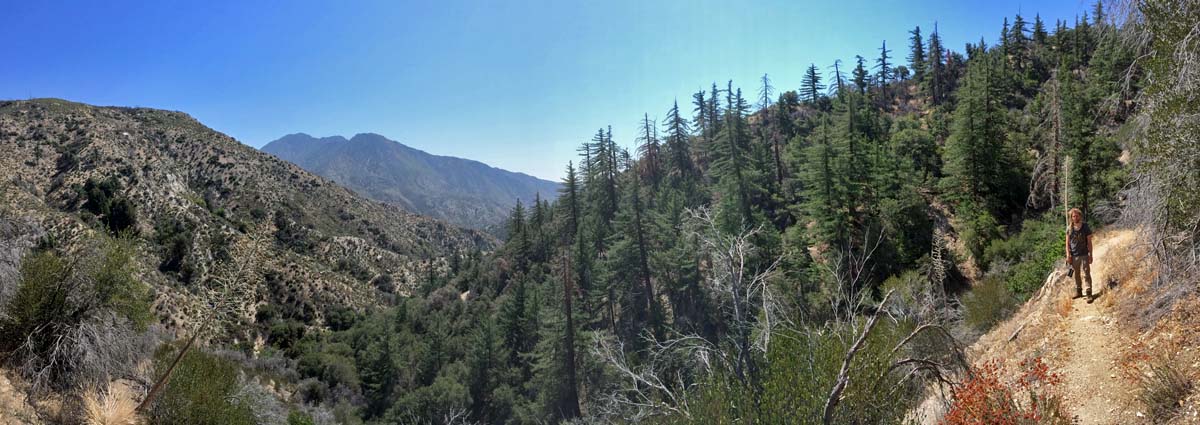


3. North Slopes
Where the forest meets the high desert interesting plant associations can be found–literally where the California Floristic Province ends at the edge of the rain shadow begins. Forests of PSMA are generally healthy except a few stands at lower elevation or on occasional south facing slopes.
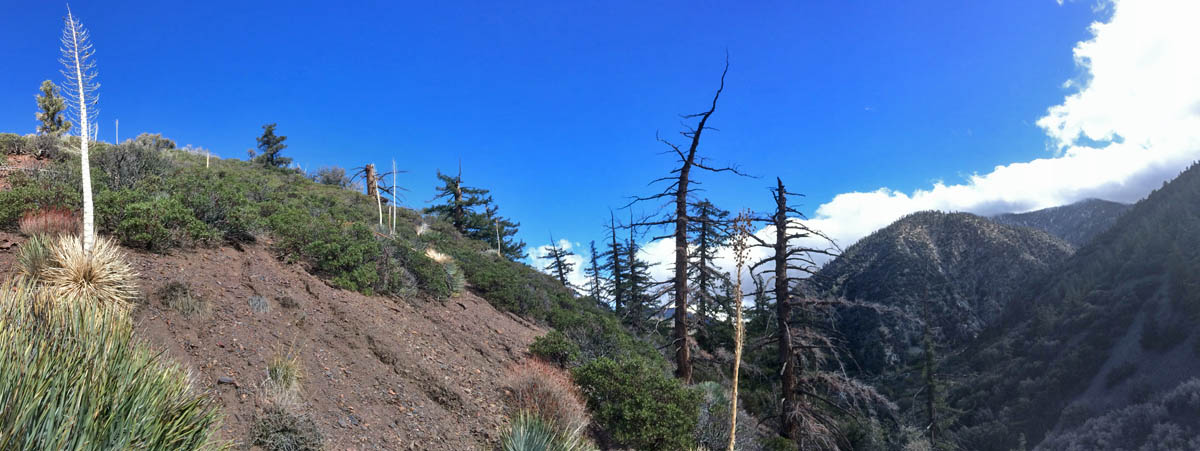
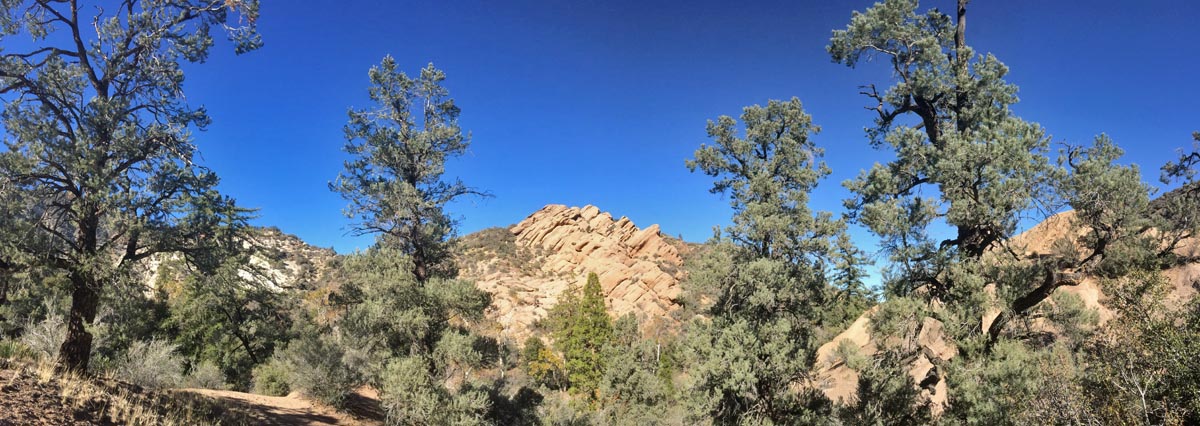
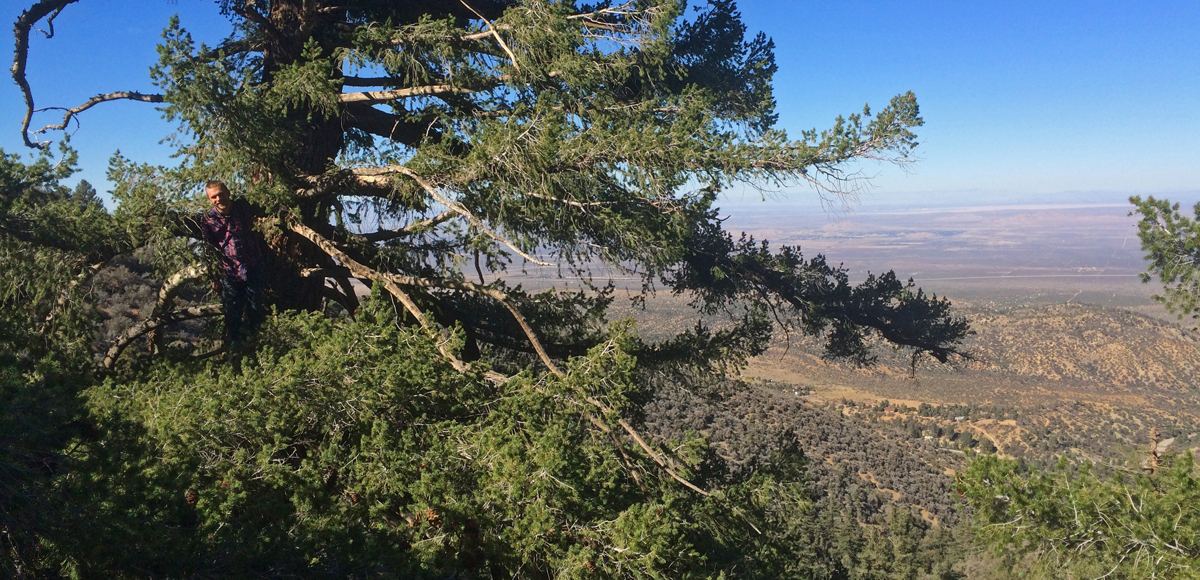
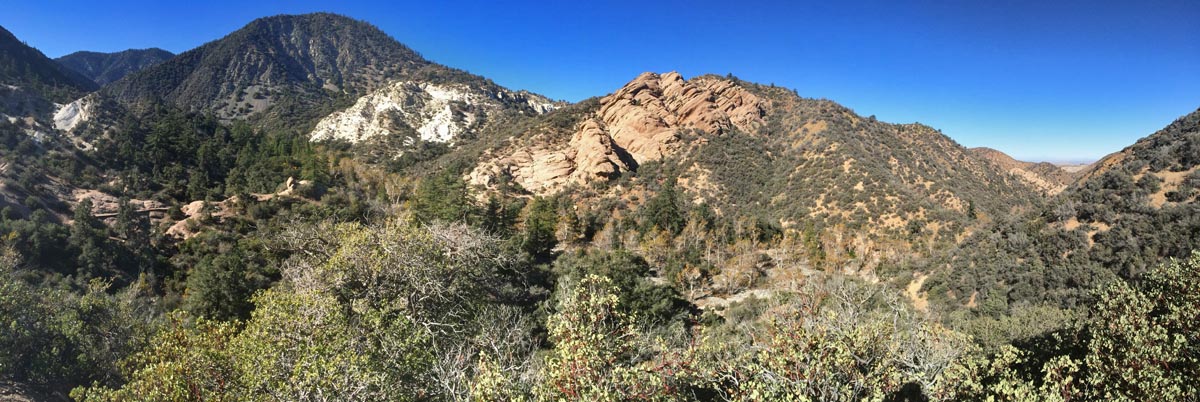
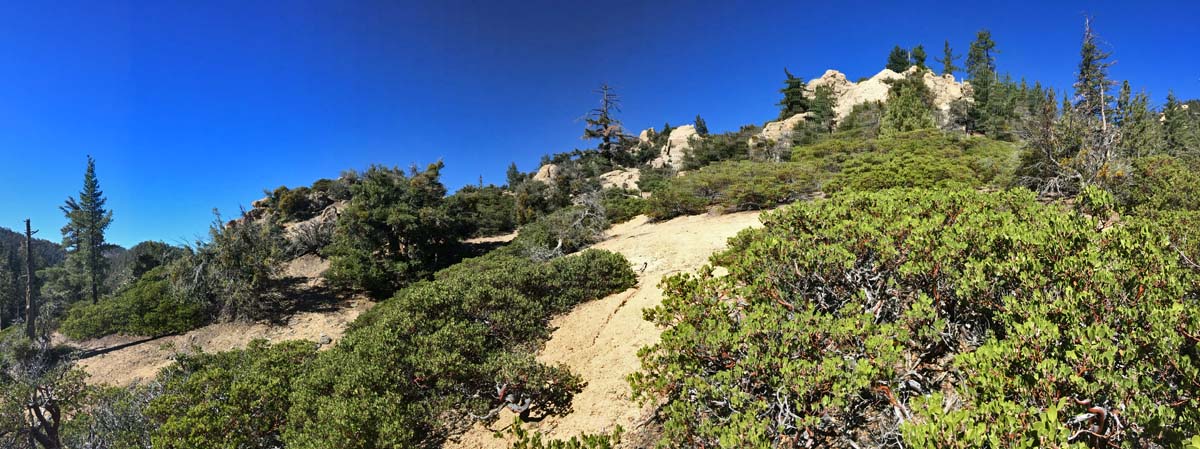
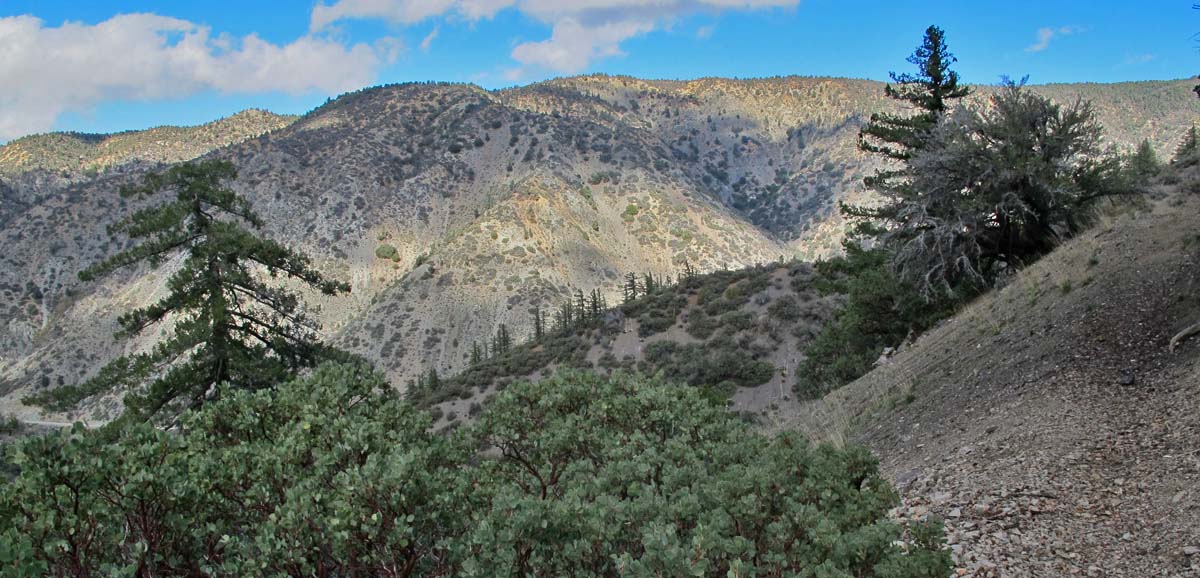
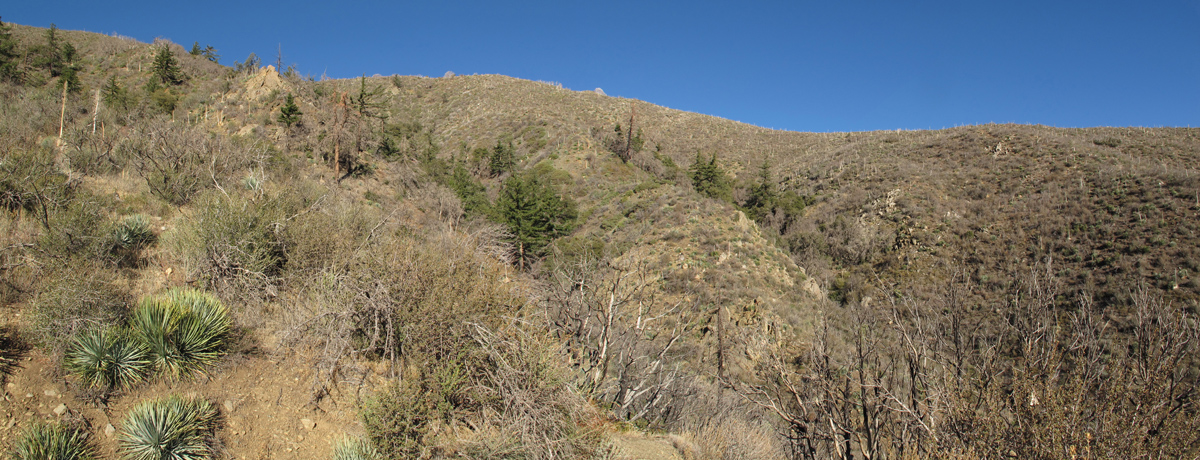
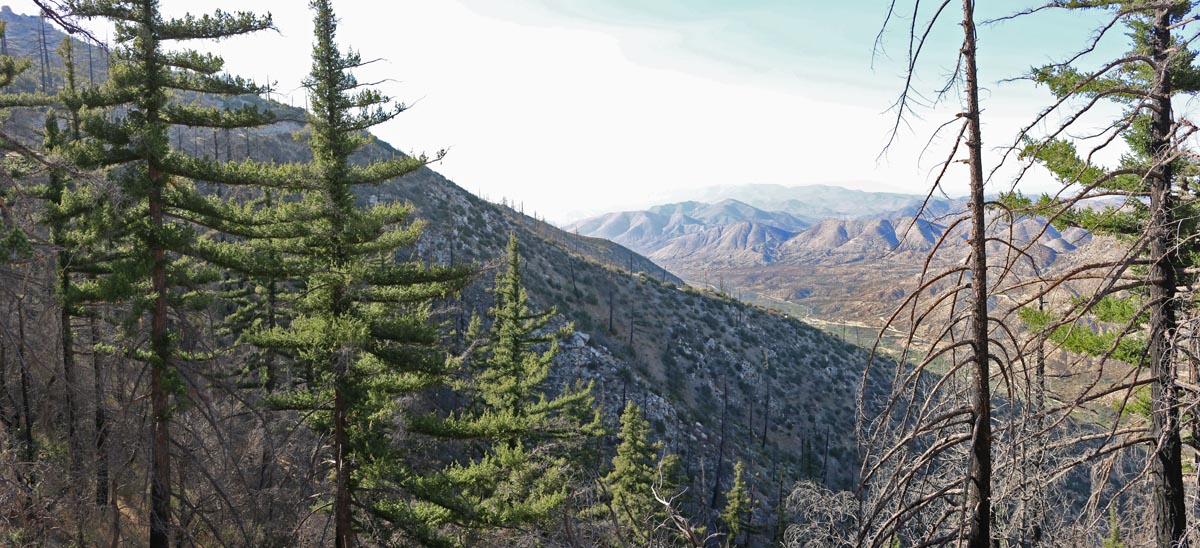
4. Castaic Region
I had never been to this hidden corner of the Angeles National Forest and was pleasantly surprised with what I found. Spectacular black oak woodlands decorate ridgelines with chaparral-covered south slopes and fir-covered north slopes. Bigcone Douglas-fir was acting like its more common relative, Douglas-fir, at the edge of meadows where fire suppression was allowing them to encroach. This was the only place in the Angeles we have seen this “invasive” behavior in PSMA.
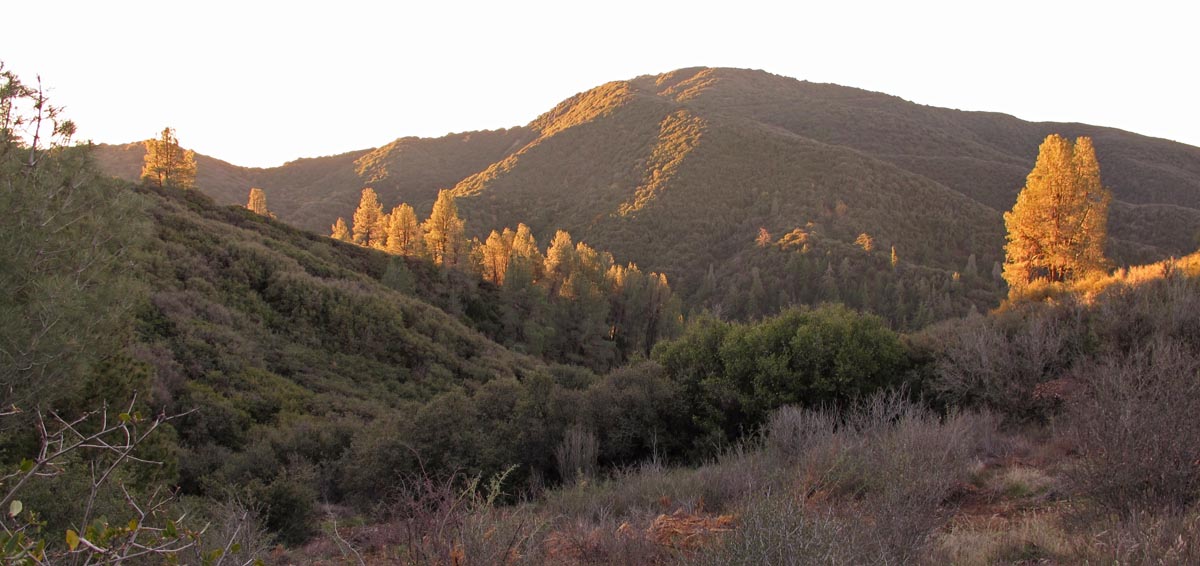
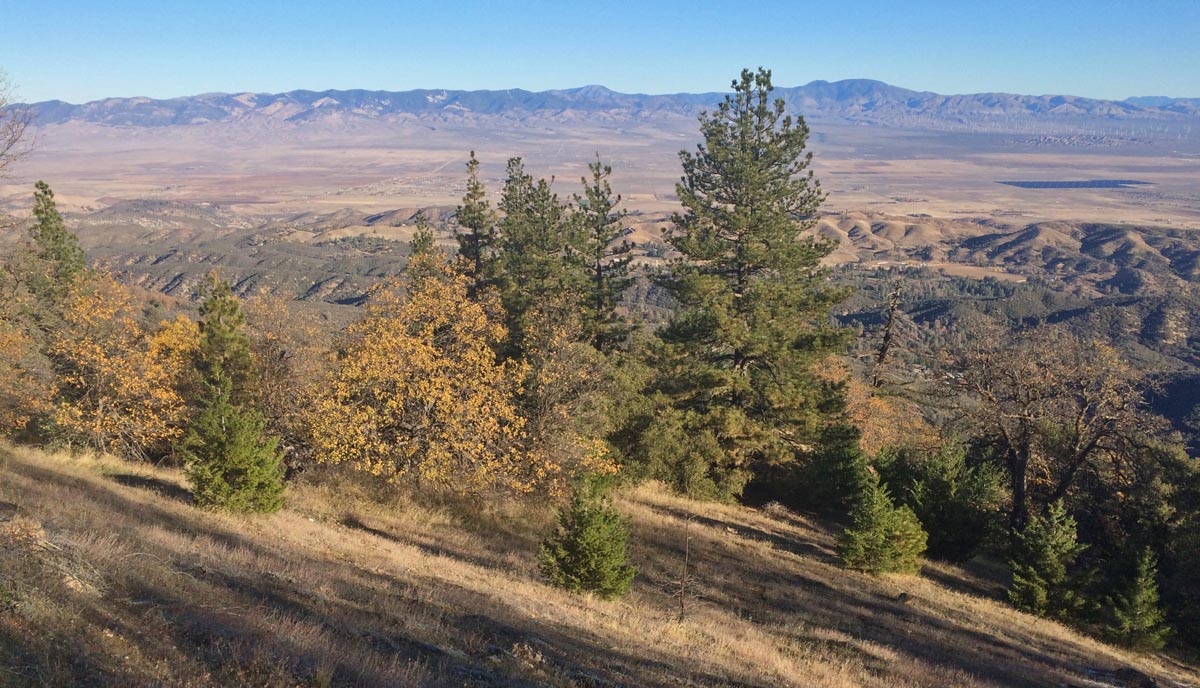
very interesting stuff!
Thanks Fred- Glad you enjoyed it.
Wonderful tour, Michael. Beautiful pics, and I learned a lot!
Thanks Andrew- it is a wonderful mountain range.
Wish I could have been there with you, especially to see the chaparral.
Amazing mountain range Tom. We have to find the A. pungens.
Very nice, outstanding job!! My favorite part of hiking the PCT is moving thru all the transition zones. This is my favorite read so far about the PCT.
Transition zones are like jazz, like the Dead, the muddy river country where clear boundaries take a back seat to fusions of all sorts. I enjoyed reading Michael’s conifer books plus the Klamath Knot this last summer on a 220 mile walk through the Klamath; all of the transitions through time and space, under the stars, just sublime!
Well said Fred! Glad you have been enjoying the Klamath Mountains — where did you walk for 220 miles?
from Castella to Ashland, early season, only a few thru-hikers so it was nice and quiet; of note, lots of character Jeffrey pines including one that was like a giant pagoda, and the western white pines were very nice as well (seems like there are very few impressive western white pines north of the Klamath on the PCT…)
-in total, just a fun trip, no high miles, space to contemplate the big picture and internalize the narrative you got going in your books, plus I know Bill Roberts in Seiad Valley, from trail work with him and Ken Graves in the Yolla Bollys back in 1986, Bill is about as “local color” as you can get!
Thanks Susan- I love walking through steep mountains in the West to experience the forest transitions as well. Happy Trails!